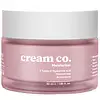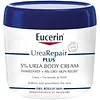What's inside
What's inside
 Key Ingredients
Key Ingredients

 Benefits
Benefits

 Concerns
Concerns

 Ingredients Side-by-side
Ingredients Side-by-side

Water
Skin ConditioningIsononyl Isononanoate
EmollientCaprylic/Capric Triglyceride
MaskingGlycerin
HumectantPropylene Glycol Dibenzoate
Skin ConditioningSodium Acrylates Copolymer
Panthenol
Skin ConditioningButylene Glycol
HumectantBellis Perennis Flower Extract
Skin ConditioningPentylene Glycol
Skin ConditioningCaprylyl Glycol
EmollientAscorbyl Tetraisopalmitate
AntioxidantNiacinamide
SmoothingLecithin
EmollientSaccharide Isomerate
HumectantPisum Sativum Extract
Skin ConditioningChamomilla Recutita Extract
Skin ConditioningEthylhexylglycerin
Skin ConditioningPropanediol
SolventSodium PCA
HumectantErythritol
HumectantCarrageenan
Hydrolyzed Glycosaminoglycans
HumectantSodium Hyaluronate
HumectantXanthan Gum
EmulsifyingCitric Acid
BufferingSodium Citrate
BufferingBenzoic Acid
MaskingSorbic Acid
PreservativeHydrolyzed Hyaluronic Acid
HumectantHyaluronic Acid
HumectantSodium Hyaluronate Crosspolymer
HumectantSodium Hydroxide
BufferingWater, Isononyl Isononanoate, Caprylic/Capric Triglyceride, Glycerin, Propylene Glycol Dibenzoate, Sodium Acrylates Copolymer, Panthenol, Butylene Glycol, Bellis Perennis Flower Extract, Pentylene Glycol, Caprylyl Glycol, Ascorbyl Tetraisopalmitate, Niacinamide, Lecithin, Saccharide Isomerate, Pisum Sativum Extract, Chamomilla Recutita Extract, Ethylhexylglycerin, Propanediol, Sodium PCA, Erythritol, Carrageenan, Hydrolyzed Glycosaminoglycans, Sodium Hyaluronate, Xanthan Gum, Citric Acid, Sodium Citrate, Benzoic Acid, Sorbic Acid, Hydrolyzed Hyaluronic Acid, Hyaluronic Acid, Sodium Hyaluronate Crosspolymer, Sodium Hydroxide
Water
Skin ConditioningGlycerin
HumectantCetearyl Alcohol
EmollientUrea
BufferingHydrogenated Coco-Glycerides
EmollientCaprylic/Capric Triglyceride
MaskingOctyldodecanol
EmollientButyrospermum Parkii Butter
Skin ConditioningSodium Lactate
BufferingGlyceryl Stearate Se
EmulsifyingCeramide NP
Skin ConditioningLactic Acid
BufferingArginine Hcl
Skin ConditioningSodium PCA
HumectantCholesterol
EmollientHelianthus Annuus Seed Oil
EmollientAlanine
MaskingCarnitine
CleansingGlycine
BufferingSodium Chloride
MaskingDimethicone
EmollientTapioca Starch
Chondrus Crispus Extract
Skin ConditioningSodium Cetearyl Sulfate
CleansingAcrylates/C10-30 Alkyl Acrylate Crosspolymer
Emulsion StabilisingDecylene Glycol
Skin ConditioningPhenoxyethanol
PreservativePentylene Glycol
Skin ConditioningWater, Glycerin, Cetearyl Alcohol, Urea, Hydrogenated Coco-Glycerides, Caprylic/Capric Triglyceride, Octyldodecanol, Butyrospermum Parkii Butter, Sodium Lactate, Glyceryl Stearate Se, Ceramide NP, Lactic Acid, Arginine Hcl, Sodium PCA, Cholesterol, Helianthus Annuus Seed Oil, Alanine, Carnitine, Glycine, Sodium Chloride, Dimethicone, Tapioca Starch, Chondrus Crispus Extract, Sodium Cetearyl Sulfate, Acrylates/C10-30 Alkyl Acrylate Crosspolymer, Decylene Glycol, Phenoxyethanol, Pentylene Glycol
 Reviews
Reviews

Ingredients Explained
These ingredients are found in both products.
Ingredients higher up in an ingredient list are typically present in a larger amount.
This ingredient is an emollient, solvent, and texture enhancer. It is considered a skin-softener by helping the skin prevent moisture loss.
It helps thicken a product's formula and makes it easier to spread by dissolving clumping compounds.
Caprylic Triglyceride is made by combining glycerin with coconut oil, forming a clear liquid.
While there is an assumption Caprylic Triglyceride can clog pores due to it being derived from coconut oil, there is no research supporting this.
Learn more about Caprylic/Capric TriglycerideGlycerin is already naturally found in your skin. It helps moisturize and protect your skin.
A study from 2016 found glycerin to be more effective as a humectant than AHAs and hyaluronic acid.
As a humectant, it helps the skin stay hydrated by pulling moisture to your skin. The low molecular weight of glycerin allows it to pull moisture into the deeper layers of your skin.
Hydrated skin improves your skin barrier; Your skin barrier helps protect against irritants and bacteria.
Glycerin has also been found to have antimicrobial and antiviral properties. Due to these properties, glycerin is often used in wound and burn treatments.
In cosmetics, glycerin is usually derived from plants such as soybean or palm. However, it can also be sourced from animals, such as tallow or animal fat.
This ingredient is organic, colorless, odorless, and non-toxic.
Glycerin is the name for this ingredient in American English. British English uses Glycerol/Glycerine.
Learn more about GlycerinPentylene glycol is typically used within a product to thicken it. It also adds a smooth, soft, and moisturizing feel to the product. It is naturally found in plants such as sugar beets.
The hydrophilic trait of Pentylene Glycol makes it a humectant. As a humectant, Pentylene Glycol helps draw moisture from the air to your skin. This can help keep your skin hydrated.
This property also makes Pentylene Glycol a great texture enhancer. It can also help thicken or stabilize a product.
Pentylene Glycol also acts as a mild preservative and helps to keep a product microbe-free.
Some people may experience mild eye and skin irritation from Pentylene Glycol. We always recommend speaking with a professional about using this ingredient in your routine.
Pentylene Glycol has a low molecular weight and is part of the 1,2-glycol family.
Learn more about Pentylene GlycolSodium PCA is the sodium salt of pyroglutamic acid. It is naturally occurring in our skin's natural moisturizing factors where it works to maintain hydration.
The PCA stands for pyrrolidone carboxylic acid, a natural amino acid derivative.
This ingredient has skin conditioning, anti-inflammatory, and humectant properties. Humectants help hydrate your skin by drawing moisture from the air. This helps keep your skin moisturized.
Learn more about Sodium PCAWater. It's the most common cosmetic ingredient of all. You'll usually see it at the top of ingredient lists, meaning that it makes up the largest part of the product.
So why is it so popular? Water most often acts as a solvent - this means that it helps dissolve other ingredients into the formulation.
You'll also recognize water as that liquid we all need to stay alive. If you see this, drink a glass of water. Stay hydrated!
Learn more about Water